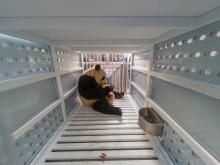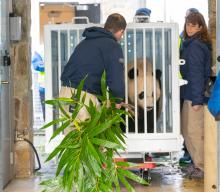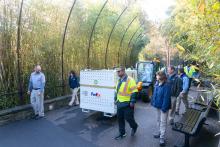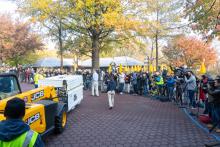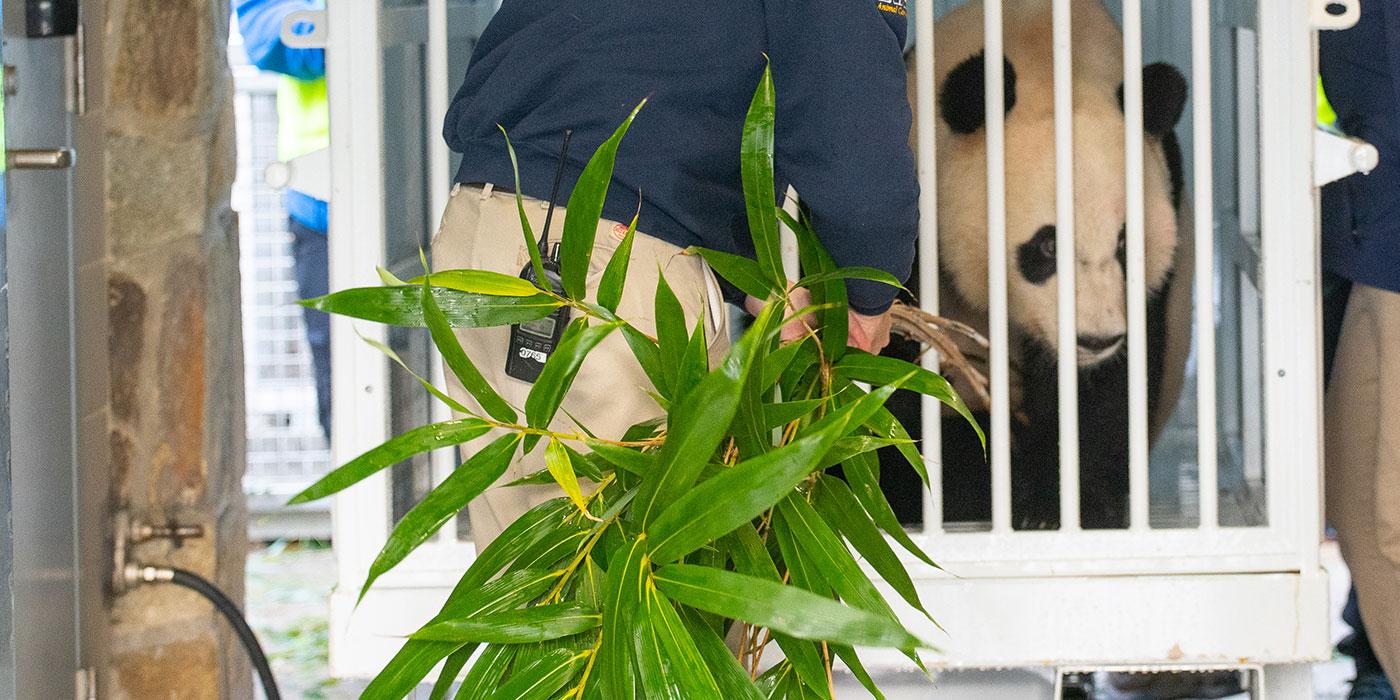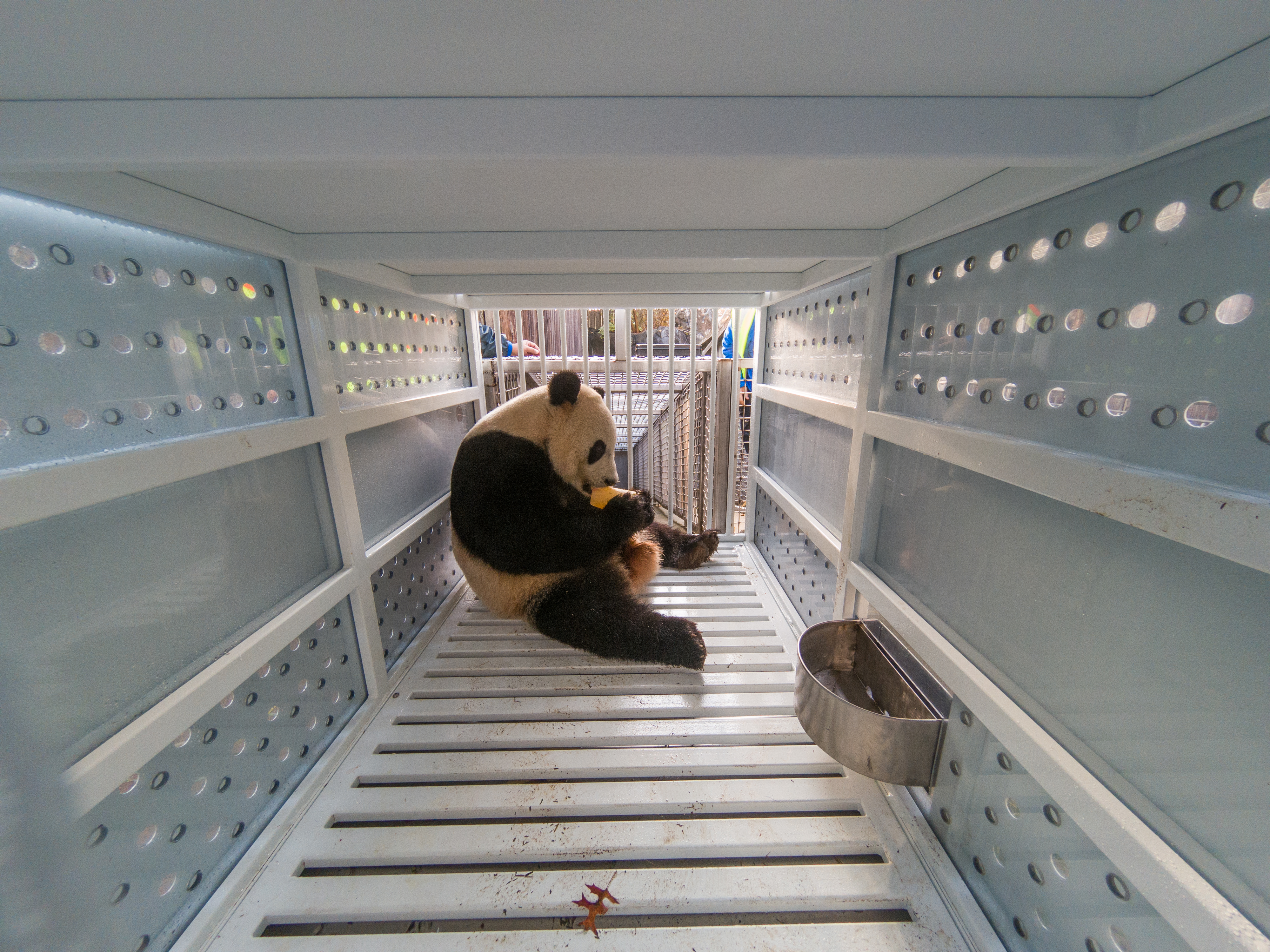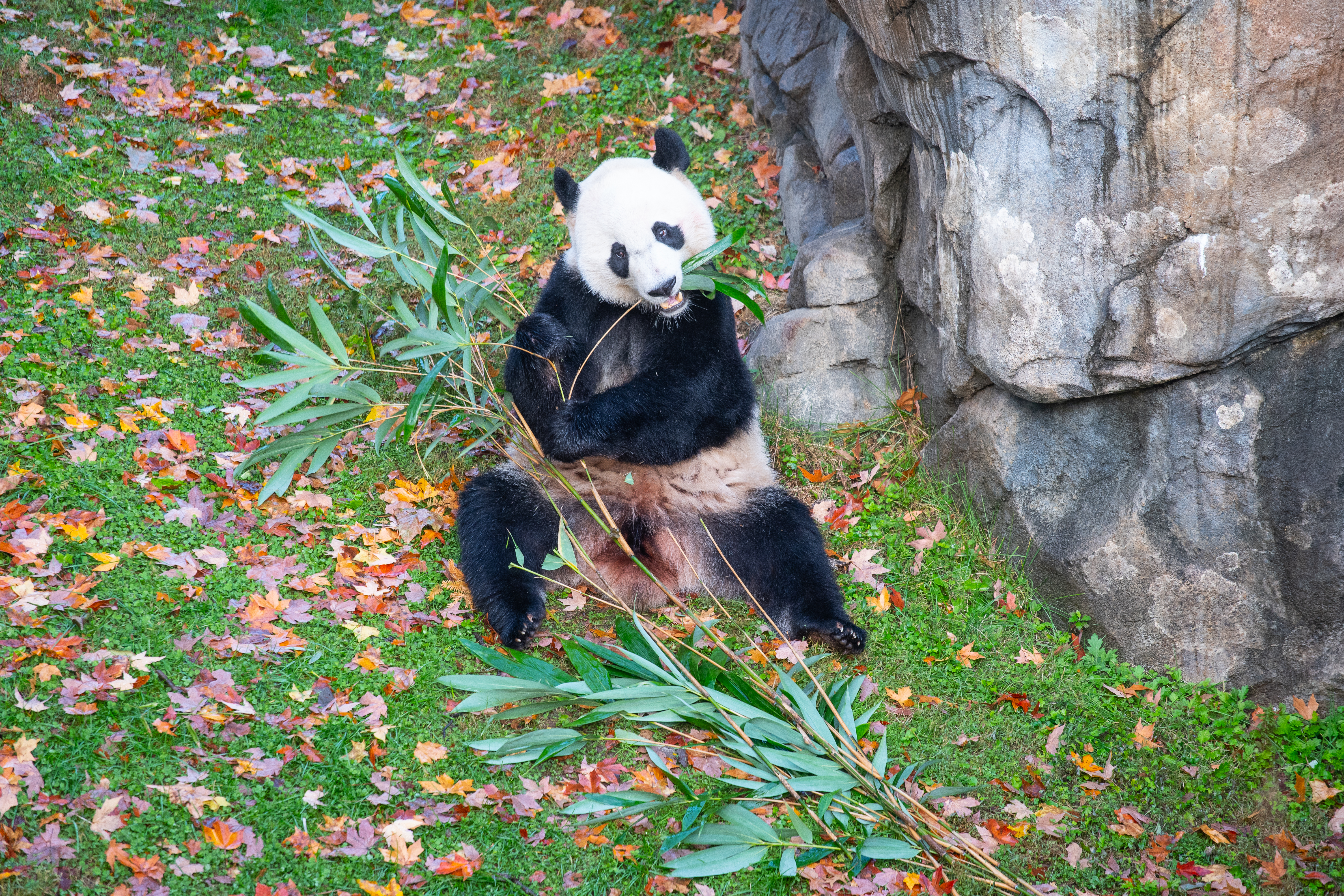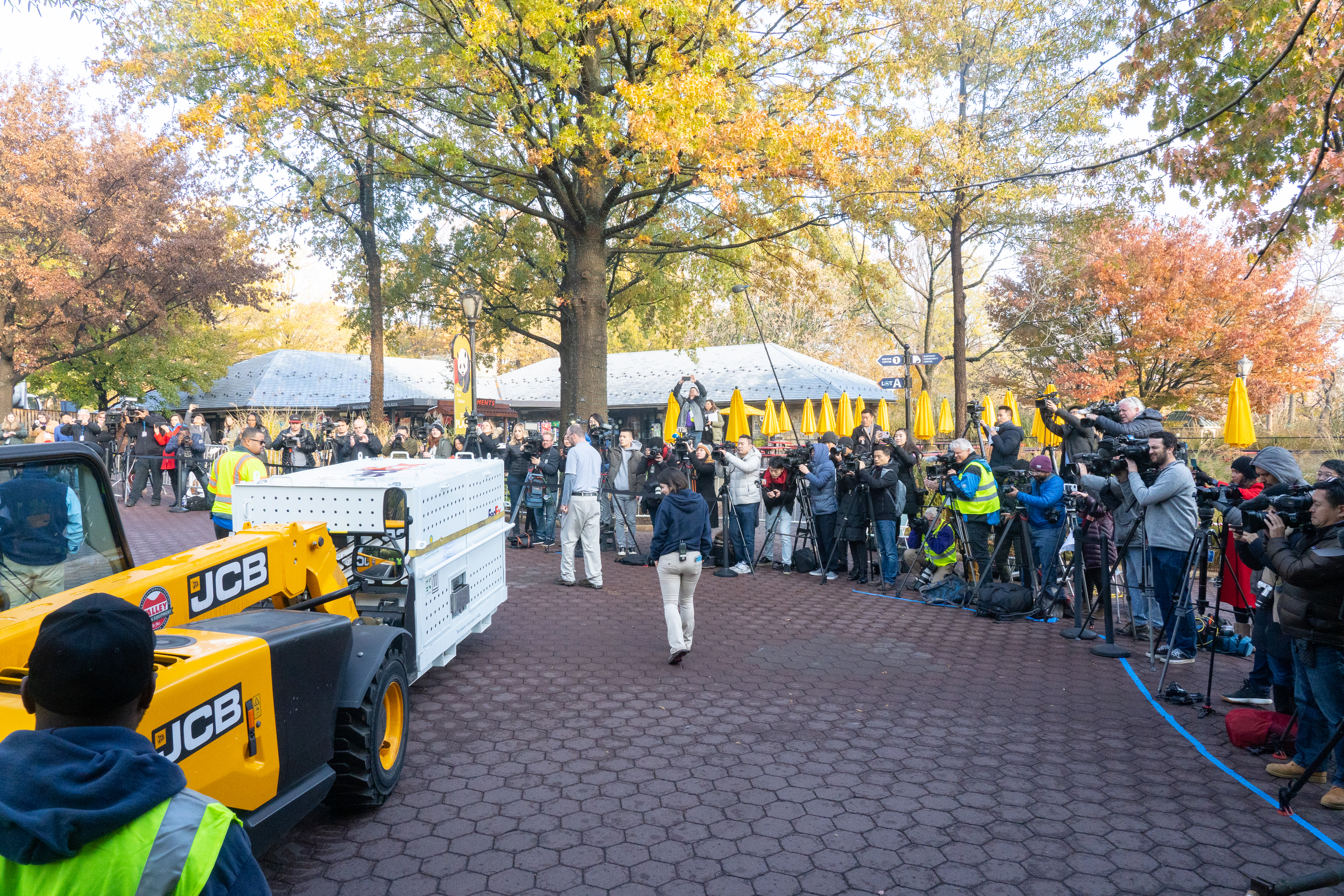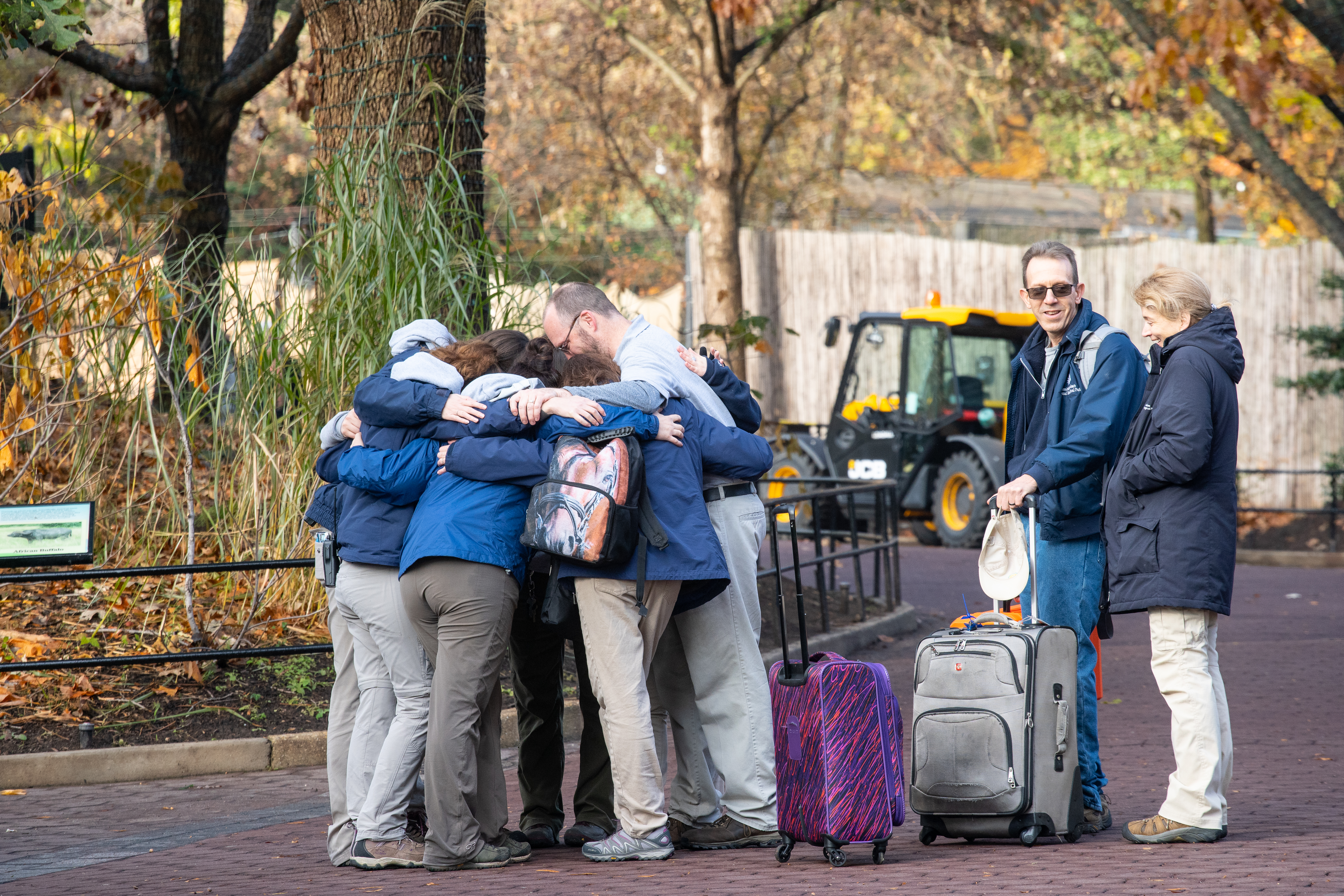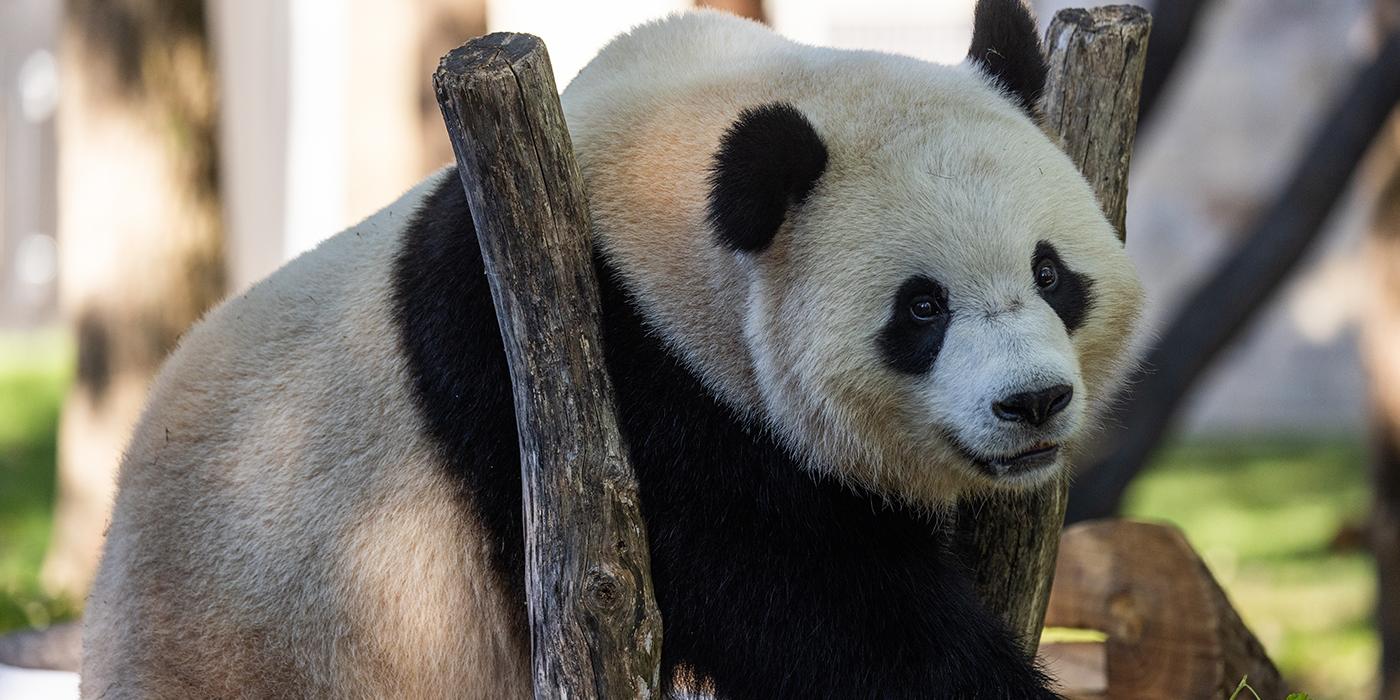Giant Panda Bei Bei Departs Smithsonian’s National Zoo for China
Bei Bei (BAY-BAY), the 4-year-old giant panda, began his journey to China this morning. He departed the Smithsonian’s National Zoo at 9:30 a.m. for Dulles International Airport in northern Virginia where he will board a dedicated FedEx 777F plane bound for Chengdu, China. The non-stop flight will take about 16 hours. Bei Bei’s departure from the Zoo was broadcast via Facebook Live.
First thing this morning, the panda team finalized preparations for Bei Bei’s departure. Bei Bei received his last “American breakfast” of bamboo and leafeater biscuits and spent time in his outdoor habitat. Already acclimated from daily training, Bei Bei was called back indoors by assistant curator of giant pandas, Laurie Thompson, and then into the custom travel crate at approximately 8:15 a.m. Zoo staff moved the crate onto a forklift that traveled carefully out of the David M. Rubenstein Family Giant Panda Habitat through the Zoo and was then loaded on a FedEx truck. Steve Monfort, the director of the Zoo, was joined by Minister Li Kexin, Deputy Chief of Mission, from the People’s Republic of China and animal care staff to say goodbye.
“Today is bittersweet,” Monfort said. “We’ve cared for Bei Bei, and along with millions, watched him grow into a true ambassador for his species. We are grateful to everyone who joined us for his farewell celebration. I am immensely proud of our team who have prepared Bei Bei for the next chapter of his life as he enters the breeding program in China. We look forward to continuing our 47-year giant panda conservation program and collaboration with Chinese colleagues to study, care for and help save the giant panda and its native habitat.”
The “FedEx Panda Express,” a custom-decaled 777F aircraft, is expected to depart at noon today from Dulles International Airport. The dedicated flight is part of the company’s FedEx Cares “Delivering for Good” initiative. FedEx uses its global network and logistics expertise to help organizations with mission-critical needs in times of disaster and for special shipments.
The Zoo will broadcast the departure of the plane on Facebook. The specialized travel crate built for Bei Bei by FedEx is made of steel and plexiglass and weighs approximately 800 pounds. Thompson, who has cared for Bei Bei since his birth, and Don Neiffer, chief veterinarian at the Zoo, will make the 8,508-mile trip with him. They will continuously monitor Bei Bei during the trip and are traveling with a supply of his favorite treats, including 66 pounds of bamboo, 2 pounds of apples and pears, two bags of leafeater biscuits, 2 pounds of cooked sweet potatoes and water.
Upon arrival in Chengdu, Bei Bei’s new keepers from the China Conservation and Research Center for the Giant Panda will meet him on the tarmac and drive him to Bifengxia Panda Base where he will stay in quarantine for approximately 30 days. The American team will follow, and Thompson will remain with Bei Bei for a few days while he acclimates to his new home. Bei Bei will enter the giant panda breeding program when he reaches sexual maturity between 6 and 7 years old.
The panda team prepared Bei Bei for the move to make sure he is comfortable and safe during his journey. To slowly acclimate him to the travel crate, keepers asked Bei Bei to walk through it every day. After he became comfortable doing that, they got him used to spending short periods of time in it with the doors closed.
Bei Bei was born Aug. 22, 2015, at the Zoo’s David M. Rubenstein Family Giant Panda Habitat. His name translates to “precious” or “treasure” in Chinese. In celebration of the September 2015 state visit and as a special honor for the cub, the name was selected by former First Lady of the United States, Michelle Obama, and First Lady of the People’s Republic of China, Peng Liyuan. At his first-birthday zhuazhou (dra-JO) ceremony, mother Mei Xiang helped Bei Bei select a banner depicting the Chinese red knot, representing friendship and luck. He is the third surviving cub of his parents Mei Xiang (may-SHONG) and Tian Tian (tee-YEN tee-YEN).
Giant pandas are listed as “vulnerable” in the wild by the International Union for Conservation of Nature. There are an estimated 1,800 in the wild. The Smithsonian’s National Zoo and Conservation Biology Institute is a leader in giant panda conservation. Ever since these charismatic bears arrived at the Zoo in 1972, animal care staff and scientists have studied giant panda biology, behavior, breeding, reproduction and disease. These experts are also leading ecology studies in giant pandas’ native habitat. The Zoo’s giant panda team works closely with colleagues in China to advance conservation efforts around the world. Chinese scientists are working to reintroduce giant pandas to the wild.
The Zoo is posting and sharing content on Facebook, Instagram and Twitter using #ByeByeBeiBei.
Related Species:
Image Gallery


